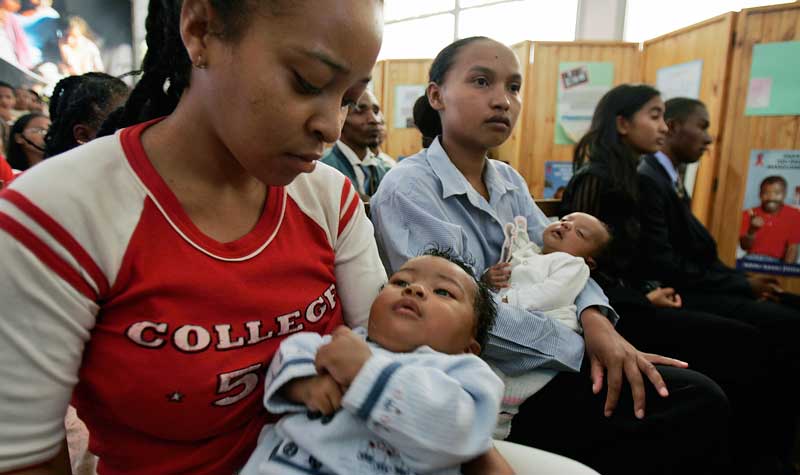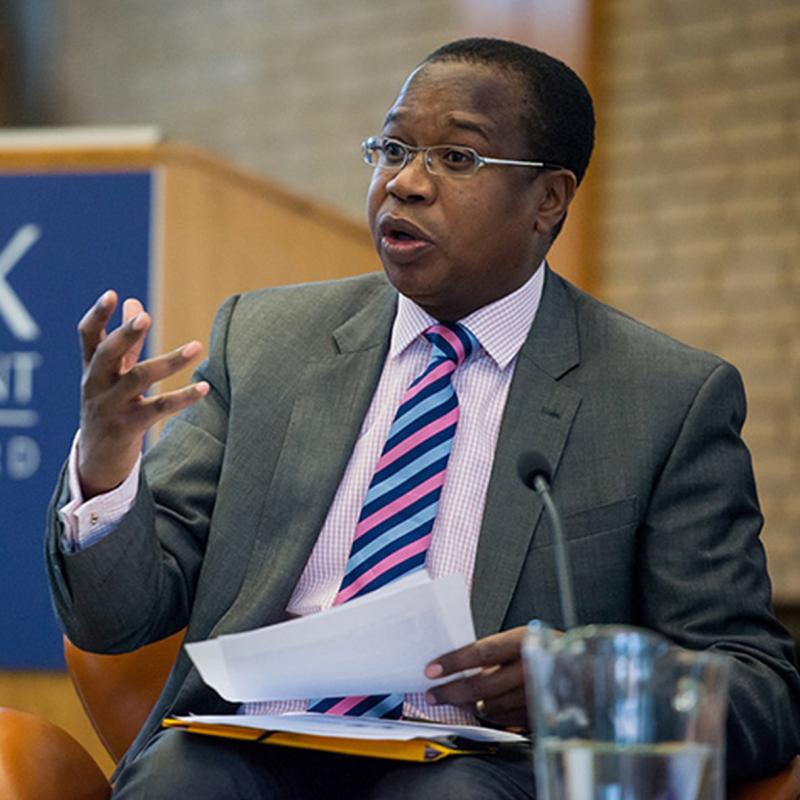Future financing of health in Africa
Estimated reading time: 4 Minutes

The economic case for investing now and how to create alternative sources of funding.
I attended and presented at the CABRI Conference on Financing Healthcare in Africa: Challenges and Opportunities, in Dar es Salaam last week of November. CABRI brings together senior officials in ministries of finance and budget in Africa, in the quest to build their capacity. This is an appropriate group with whom to have a conversation regarding the future funding of health.
There are two global imperatives around health:
As for financing these imperatives, the Abuja target of earmarking 15% of government expenditure on health over the next few decades, is key to meeting them by 2030, but this example is far from the common case. Health funding has risen in Africa since 2001, but it still has not reached the level that the Abuja Declaration promised. From 2001 to 2011, health budgets in AU Member States increased from 9% to 11% of public expenditures. Six AU Member States (Liberia, Madagascar, Malawi, Rwanda, Togo and Zambia) have achieved the Abuja target of allocating 15% of public expenditure to health, and a number of other countries (e.g. Djibouti, Ethiopia, Lesotho and Swaziland) are within reach of the 15% target. Still, the vast majority of African nations have not met this essential commitment.

Four things struck me while I was at this conference: First, how large the problem of non-communicable diseases (NCDs) is becoming; second, how low-income countries are responding to the domestic funding challenge; third, how difficult it is to handle the transition or graduation of countries that have achieved middle-income status; and finally, how high the rates of return are from investing in health and the financing options that this presents.
The problem of NCDs
As countries strive for UHC coverage, one is struck by the rise of non-communicable diseases (for example obesity or diabetes) as a disease burden. Even HIV/AIDS has become a quasi-NCD, having transitioned ‘from a death-sentence, to a debt-sentence’, thanks to the success of antiretroviral therapies (ARTs). (See the related article on this topic in Finance and Development by Collier, Sterck and Manning.) The WHO projects that 28 million people in the African Region will die from a chronic disease over the next 10 years. This rate of increase of deaths from NCDs will outstrip that from infectious diseases, maternal and perinatal conditions and nutritional deficiencies more than 4-fold in the next 10 years. Clearly, NCDs will be next health battle for Africa.
Responding to the domestic funding challenge
It is interesting that low-income countries in Africa, such as Tanzania and Ivory Coast, are responding to the domestic health financing challenge through national health insurance schemes. These countries seem to fully understand the need to raise domestic resources to fund health and to get the beneficiaries to contribute as well. Tanzania has a nascent national health insurance scheme, covering public sector workers, and a community-health insurance scheme. The challenge is how to cover people in the informal sector. Here, mobile-phone based insurance-payment systems have the potential to deal with access to the informal sector.
Handling middle-income status
Countries that are transitioning out of funding by the international community thanks to their strengthening domestic economies, need a transition plan, and so do the global funders. First of all, GNI (Gross National Income) per capita cannot be the sole determinant for such graduation. GNI per capita needs to considered with, if not adjusted using, the levels of disease-burden and general poverty. There is also a need to focus on ‘key-populations’ and ‘key-poor regions’ in some of these middle income countries. A new financing architecture is required. One that involves donors and recipients in the design of virtuous commitment mechanisms that deliver real health benefits for those affected on the ground.
Returns on investing in health
The evidence shows a high the rate of return on investing in HIV, as I’ve shown previously in a RethinkHIV Policy brief on the ‘Economic Benefits of Investing in HIV in Uganda’. In Uganda, the rate of return on investment in effective HIV interventions is of the order of 186 % over the next 35 years. What an investment! This finding should assist health officials in communicating the economic benefits of health investment to their colleagues in national treasuries. National treasuries have competing needs, such as infrastructure investment, and the health sector needs to begin using an economics and investment-language to compete for valuable resources. Health is one of the better long-term investments around and studies now make it clear it shouldn’t be considered a handout or a concession.
Such a high rate of return on health investments suggests there may be a case for re-thinking borrowing in order to finance health. Could a ‘health-bond’ or ‘HIV-bond’ be successfully launched? My view is that international finance institutions and global funders could be enticed to offer a partial guarantee on such bonds and make them more attractive.
The fact that CABRI, an association of national treasuries, was having a discussion on sustainable financing of the health sector, is an excellent start towards financing universal health care. It bodes well for the creation of a common language with which ministries of health communicate more regularly and transparently about costs and benefits with ministries of finance.
Blog by Prof Mthuli Ncube, Leader of RethinkHIV, and Professor of Public Policy, Blavatnik School of Government, & Fellow, of St Antony’s College, University of Oxford
I attended and presented at the CABRI Conference on Financing Healthcare in Africa: Challenges and Opportunities, in Dar es Salaam last week of November. CABRI brings together senior officials in ministries of finance and budget in Africa, in the quest to build their capacity. This is an appropriate group with whom to have a conversation regarding the future funding of health.
There are two global imperatives around health:
- The targets for SDG3 on Health; and
- Achieving universal health care (UHC).
As for financing these imperatives, the Abuja target of earmarking 15% of government expenditure on health over the next few decades, is key to meeting them by 2030, but this example is far from the common case. Health funding has risen in Africa since 2001, but it still has not reached the level that the Abuja Declaration promised. From 2001 to 2011, health budgets in AU Member States increased from 9% to 11% of public expenditures. Six AU Member States (Liberia, Madagascar, Malawi, Rwanda, Togo and Zambia) have achieved the Abuja target of allocating 15% of public expenditure to health, and a number of other countries (e.g. Djibouti, Ethiopia, Lesotho and Swaziland) are within reach of the 15% target. Still, the vast majority of African nations have not met this essential commitment.

Four things struck me while I was at this conference: First, how large the problem of non-communicable diseases (NCDs) is becoming; second, how low-income countries are responding to the domestic funding challenge; third, how difficult it is to handle the transition or graduation of countries that have achieved middle-income status; and finally, how high the rates of return are from investing in health and the financing options that this presents.
The problem of NCDs
As countries strive for UHC coverage, one is struck by the rise of non-communicable diseases (for example obesity or diabetes) as a disease burden. Even HIV/AIDS has become a quasi-NCD, having transitioned ‘from a death-sentence, to a debt-sentence’, thanks to the success of antiretroviral therapies (ARTs). (See the related article on this topic in Finance and Development by Collier, Sterck and Manning.) The WHO projects that 28 million people in the African Region will die from a chronic disease over the next 10 years. This rate of increase of deaths from NCDs will outstrip that from infectious diseases, maternal and perinatal conditions and nutritional deficiencies more than 4-fold in the next 10 years. Clearly, NCDs will be next health battle for Africa.
Responding to the domestic funding challenge
It is interesting that low-income countries in Africa, such as Tanzania and Ivory Coast, are responding to the domestic health financing challenge through national health insurance schemes. These countries seem to fully understand the need to raise domestic resources to fund health and to get the beneficiaries to contribute as well. Tanzania has a nascent national health insurance scheme, covering public sector workers, and a community-health insurance scheme. The challenge is how to cover people in the informal sector. Here, mobile-phone based insurance-payment systems have the potential to deal with access to the informal sector.
Handling middle-income status
Countries that are transitioning out of funding by the international community thanks to their strengthening domestic economies, need a transition plan, and so do the global funders. First of all, GNI (Gross National Income) per capita cannot be the sole determinant for such graduation. GNI per capita needs to considered with, if not adjusted using, the levels of disease-burden and general poverty. There is also a need to focus on ‘key-populations’ and ‘key-poor regions’ in some of these middle income countries. A new financing architecture is required. One that involves donors and recipients in the design of virtuous commitment mechanisms that deliver real health benefits for those affected on the ground.
Returns on investing in health
The evidence shows a high the rate of return on investing in HIV, as I’ve shown previously in a RethinkHIV Policy brief on the ‘Economic Benefits of Investing in HIV in Uganda’. In Uganda, the rate of return on investment in effective HIV interventions is of the order of 186 % over the next 35 years. What an investment! This finding should assist health officials in communicating the economic benefits of health investment to their colleagues in national treasuries. National treasuries have competing needs, such as infrastructure investment, and the health sector needs to begin using an economics and investment-language to compete for valuable resources. Health is one of the better long-term investments around and studies now make it clear it shouldn’t be considered a handout or a concession.
Such a high rate of return on health investments suggests there may be a case for re-thinking borrowing in order to finance health. Could a ‘health-bond’ or ‘HIV-bond’ be successfully launched? My view is that international finance institutions and global funders could be enticed to offer a partial guarantee on such bonds and make them more attractive.
The fact that CABRI, an association of national treasuries, was having a discussion on sustainable financing of the health sector, is an excellent start towards financing universal health care. It bodes well for the creation of a common language with which ministries of health communicate more regularly and transparently about costs and benefits with ministries of finance.
Blog by Prof Mthuli Ncube, Leader of RethinkHIV, and Professor of Public Policy, Blavatnik School of Government, & Fellow, of St Antony’s College, University of Oxford

